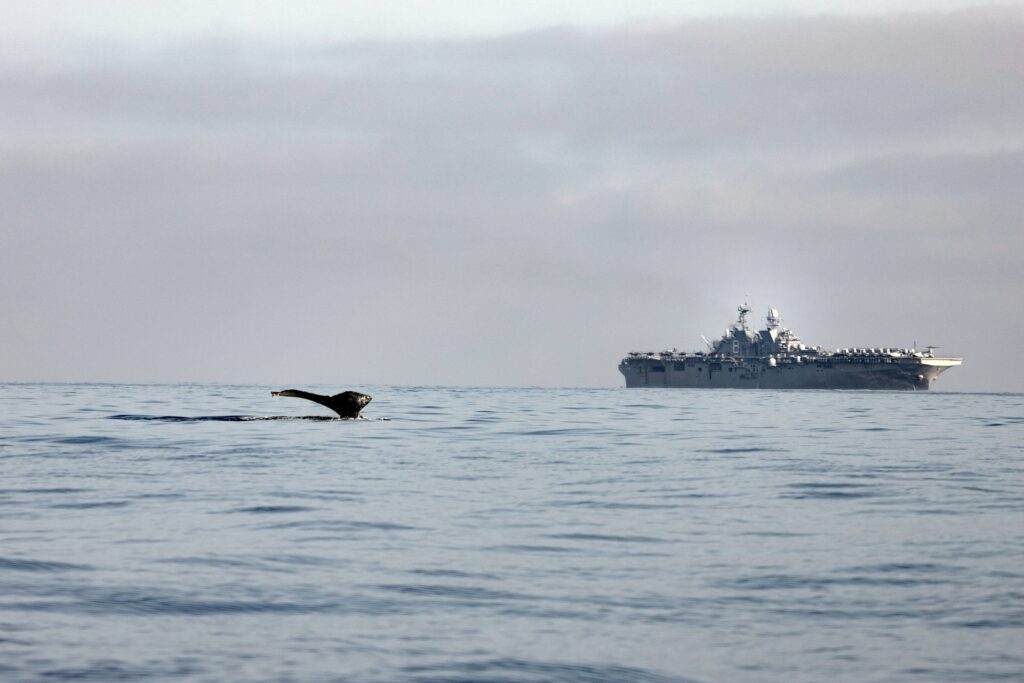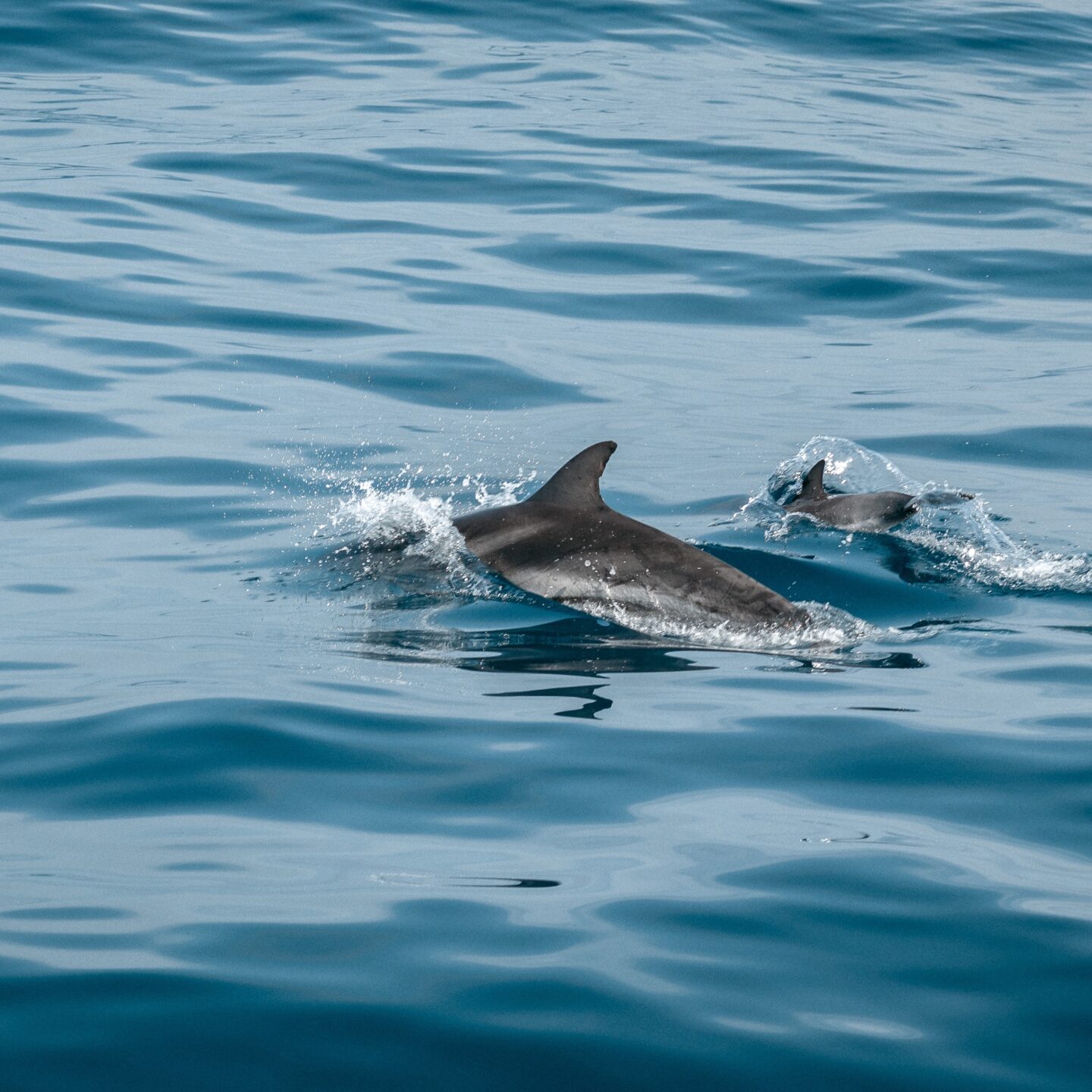Back in December, we sat down with Harry Eckman, CEO of the World Cetacean Alliance (WCA) and Human Behaviour Change for Life (HBCL) Specialist Team member, to chat to him about how he has used human behaviour change science (HBC) throughout his career to make lasting positive change for animals, people, and the environment – and also how it’s come in use in his personal life too.
We loved how Harry really brought to life behavioural science’s rich variety of uses through his practical examples and real-life experience. We talked about its use in the marine conservation projects run by the WCA, how Harry has used it to empower communities around the world to improve animal welfare conditions, and how it has helped him transition into his role as CEO of an international organisation.
Harry brought so many fascinating insights into this conversation, and we would love for you to watch the whole thing here…
In the meantime, here are five of our favourite takeaways from this conversation:
1. Behaviour change science is everywhere
Have you ever learnt something new, perhaps a new word or phrase, and then suddenly you see it everywhere? Well, I just learnt that this is called the Baader-Meinhof Phenomenon. Something tells me that I’m not going to start seeing this everywhere, but for Harry, when he learnt about human behaviour change, that’s exactly what happened.
“I remember sitting in a coffee shop having a conversation with a colleague about human behaviour change and just looking around and going ‘it’s everywhere!’. Literally, once you understand that human behaviour change is part of everything that we do, whether it’s the process that you go through buying a cup of coffee – you open the door, you know exactly the route you go down to speak to the person to order the coffee. You look out on the street – the fact that people are walking on pavements rather than just, you know, falling into the road. It literally is everywhere! When you step out and you start seeing it everywhere it, first of all, is quite amazing that it’s so instinctive to us but also when you understand that, how much easier it is to embed it into a project or a process without overegging it”.

It’s not just that behaviour change is relevant everywhere in our everyday lives, but it also acts as a common thread that can flow through our professional careers too. We love the practice of connecting learning from one sector to another here at HBCL, that’s one of the reasons why our team of Specialists have such varied backgrounds. Harry’s move to become CEO of an international marine conservation organisation, in 2021, from a career working primarily in animal welfare clearly benefited from celebrating the ‘human’ as the common thread:
“It really comes down to HBC being embedded anywhere. You know, it doesn’t matter what the species, it doesn’t matter what the community, it doesn’t matter what the issue, the things are the same – people are people, communities are communities, how you affect and impact attitudes and behaviours is the same, the approach is the same”
2. Empowering and ownership is key
One of Harry’s earliest projects that involved embedding behaviour change was at the international organisation IFAW, addressing stray dog populations. Using a behaviour change approach from the beginning, Harry and his team brought communities into the heart of the solution. Rather than telling communities how they should solve the problems they were facing, they empowered them and gave them “ownership of developing a project that would address the problems related to stray dogs as they saw them and coming up with locally based solutions”.
It was clear that this was a pivotal moment for Harry, as he was seeing “how you were able to take these human behaviour change concepts and create a project that actually ended up making a difference and creating this really comprehensive community-based initiative that helped dogs, helped the community, helped the people and made a big impact”.
Similarly, while working in Bosnia, Harry explained how “it’s very much about facilitating the process and getting them to understand the problem itself and then helping them and nurturing them to find their own solutions within the toolkit that you’re able to provide.”
When you give someone the agency to be in control of their own changes, in the way that works for them, it can be like turning on a switch. You can go from ambivalence, or even resistance, to enthusiasm and collaboration. At HBCL, we focus on empowering people in everything we do – whether it’s the individuals or communities we are working with through clients or even with the clients themselves.
Harry puts it just right – “creating that sense of ownership is as important as the end result itself” – We couldn’t agree more.
3. No two solutions should be the same
Every person has their own unique perspective, formed based on their experiences, their beliefs, fears, culture and more and so it goes that every solution needs to be as unique as the people it involves. In the projects that Harry has been involved with over the years, this understanding has been key to his success.
“Understanding your audiences and their motivations is key, and it was interesting to see those differences – where in one community it was the vet that seemed to have the hold on the issue and another one it was the municipality and the mayor themself, and in others it was just the community and the people that were out on the street feeding the dogs – and it was their position within the community that affected the subtle differences between the outcomes”.
Some problems lend themselves to simple solutions, while others are more complex. The WCA is addressing both across the organisation’s programmes. Creating a training course to increase the skills, knowledge and confidence of ship crew to reduce the risk of collision with whales, through the WCA’s ‘Becoming ‘Whale Aware” ship strikes course, is an example of a simple solution to address one part of a problem. On the other end of the scale, the WCA’s ‘Dolphins Aren’t Discard’ campaign is tackling the complex issue of supertrawlers off the coast of the UK that cause the death of hundreds of dolphins each year after they are caught as bycatch.
We thrive off designing creative and unique solutions here at HBCL, which is why innovation is one of our core values.

4. Change takes time
It’s in our nature to want to see results from our actions in a very short space of time, especially when we care deeply about the change we are trying to influence. It is vital to accept that to see a change occur in a meaningful and sustained way, we will need to allow time to go through the process. This is especially relevant when the change is complex, deeply embedded in culture, beliefs and communities, or when there might be a level of distrust there to begin with.
“You could take six months to a year building that trust and that relationship, and understanding the audience and the things that are important to them and their motivations, before you even start project planning or implementing a project. I know people often want to rush that part and get to the bit that’s going to make a difference and have an impact, but you can’t. Building that foundation is key to the success of these projects and so it’s really important to invest that time at the beginning. Human behaviour change is about human attitudes and behaviours, and you need to invest the time to understand what those are locally in order to find the best solutions.”
We have developed our own framework here at HBCL, the Understand – Change – Impact framework.
The understand phase of this framework is really the foundation from where all the rest of the work needs to be built upon. All too often we find organisations have skipped over this key phase of a project, relying heavily on assumptions and guesswork so that they can get to the change phase – the intervention. Ultimately, this will only end up taking more time, costing more money, and causing frustration and stress as the change is not seen to happen as quickly as you’d like.

5. Values based approach
The uniqueness of every person’s lived experience means that their drivers and motivations all differ too. It shouldn’t be surprising then that we cannot force people to care about the same things that we do. That using the justifications that might work for us or the people we are most familiar with, won’t work for others. But that doesn’t mean that we can’t want the same outcome. It just means we might need to work a little harder to find the common ground and to tailor our messaging to resonate with the things that different audiences do care about.
This is exactly what Harry had to explore during the development of the WCA’s ‘Dolphins Aren’t Discard’ campaign – a campaign that tackles the issues of supertrawlers fishing in UK waters, that result in dolphins being caught up in the nets and needlessly killed as bycatch. Some of these dolphins then end up washed up on the beaches of Sussex. The WCA found an unlikely ally for this campaign in the local fishers of Sussex. Harry, and his colleague Thea Taylor, the Sussex Dolphin Project lead, found that although the fishers didn’t like to see the bodies of dead, disfigured dolphins on the beach, this wasn’t the driving reason behind their dislike of the supertrawlers. For them, these large vessels are depleting the fish stocks so much that it is affecting their livelihood. These two very different viewpoints, ultimately, are seeking the same goal – an end to destructive fishing practices.
“If we’re all fighting for the same thing then our priority doesn’t matter. I don’t have to have them care about dolphins as much as I do, as long as the result of what they care about mirrors the result of what I care about, and we can work collaboratively together to affect change”.

Similarly, a recent paper authored by team members from Human Behaviour Change for Life, including Harry, also delved into this idea of a values-based approach – this time looking at the motivators behind those visiting the captive orcas held at SeaWorld in Florida.
The results of this study, which used the COM-B model, uncovered several different motivators. One theme that emerges strongly was that of people’s desire to create memorable experiences with their family. This was amplified by feelings of nostalgia and a want to recreate memories of an experience they had when they were younger. Interestingly, a sub section of this particular group was aware of the animal welfare issues surrounding the attraction and yet they were willing to ignore that in order to create that experience with their family.
So, when looking at this group in particular, Harry explains how “there’s no point in telling them that it’s cruel because they already know. You just tell them it’s cruel again and again? No, you have to look at ways of changing their behaviours in relation to the things that are clearly important to them and that might be providing them with alternatives”. In this instance Harry talks about responsible whale watching as an alternative way to create lasting memories with family. Ultimately, this might not be the alternative that resonates with these individuals, but it illustrates effectively that once we have identified a value that is important to those we are working with, we can begin to explore alternative solutions that resonates with them while meeting our own goals.
Ultimately, using a values-based approach can avoid a polarizing ‘them and us’ narrative, especially when exploring sensitive issues and can speak to a shared vision.
We wanted to thank Harry again for sharing so much about his experience of using behaviour change in the work he has done, his learnings and for inspiring us to do more.
“…people that are involved in animal welfare and conservation – we care about animals, but you can’t do this work without having an interest in people as well. We’re at the core of all of the problems related to animal welfare and therefore at the core of all the solutions so you have to [work with people] whether you want to or not”.
We would really encourage you to take a look at the World Cetacean Alliance website, get involved in their #DolphinsArentDiscard campaign, or donate to help their important work.
If you would like to know more about how human behaviour change science can help you achieve more, then please get in touch for a free chat.

